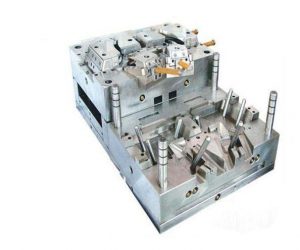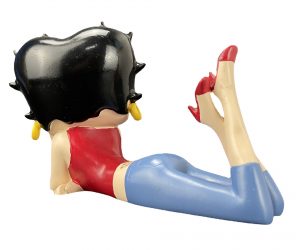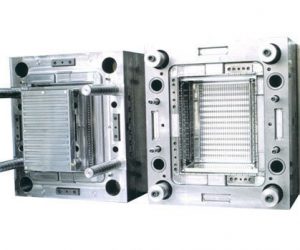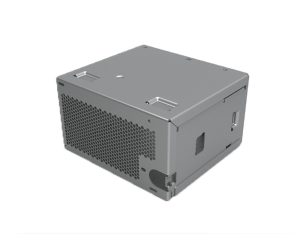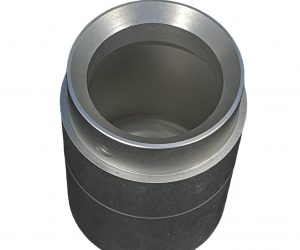Injection molding is one of the most widely used manufacturing processes for producing plastic parts. It involves injecting molten plastic material into a mold to create various products ranging from auto parts to medical devices. This process is known for its efficiency, precision, and ability to produce high volumes of complex parts. The injection molding machine is the key piece of equipment that enables this process.
Key Stages of the Injection Molding Process
- Material Selection and Pretreatment:
- The process begins with selecting and pre-treating the plastic material. This includes drying, screening, and grinding the plastic pellets to ensure uniformity and prevent moisture issues that could affect the quality of the final product.
- Melting the Plastic:
- The plastic material is heated to a molten state using either a heater or a heated screw inside the machine. This ensures the material is in a form that can flow into the mold.
- Injection into the Mold:
- Once the plastic is molten, it is injected under high pressure into a mold. The mold is typically made up of two halves: a male and a female mold. The female mold creates the external shape of the product, while the male mold shapes the internal cavity.
- Cooling and Solidification:
- After injection, the molten plastic fills the cavity of the mold and begins to cool. Cooling is a crucial step, as it solidifies the plastic into the desired shape and ensures dimensional stability. The cooling time depends on factors such as material type, wall thickness, and mold temperature.
- Ejection:
- Once the part has cooled and solidified, the mold is opened, and the part is ejected using an ejection system. In some cases, additional trimming, painting, or assembly may be needed for the final product.
Types of Injection Molding Machines
There are different types of injection molding machines, each with its features and capabilities. The three main categories are:
1. Hydraulic Injection Molding Machines:
- These machines use hydraulic pressure to operate the injection unit and mold clamping system.
- Advantages: High clamping force, fast cycle times, and relatively low maintenance costs.
- Disadvantages: High energy consumption, noise, and limited precision.
2. Electric Injection Molding Machines:
- These machines use electric motors to drive the injection unit and clamping mechanism.
- Advantages: High precision, repeatability, low energy consumption, and minimal noise and heat generation.
- Disadvantages: Higher initial costs, slower cycle times, and lower clamping force compared to hydraulic machines.
3. Hybrid Injection Molding Machines:
- These combine hydraulic and electric technologies. The clamping unit operates hydraulically, while the injection unit is driven by electric motors.
- Advantages: A balance between performance, energy efficiency, and cost.
- Disadvantages: Increased complexity and maintenance needs.
Main Parts of an Injection Molding Machine
An injection molding machine consists of two main components: the Injection Unit and the Clamping Unit.
Injection Unit
- Feeding Hopper: The point where plastic pellets are introduced to the machine.
- Extruder Screw and Barrel: The screw moves and melts the plastic inside the barrel.
- Injection Chamber and Nozzle: The molten plastic is accumulated and then injected into the mold.
Clamping Unit
- Mold Clamping Mechanism: This system applies the required clamping force to keep the mold halves closed during injection.
- Fixed and Moving Plates: These plates help align the mold and support its operation.
- Ejector System: Used to eject the molded part after cooling.
How an Injection Molding Machine Works
The operation of an injection molding machine can be divided into four main stages:
- Clamping:
- The clamping unit closes the mold and applies sufficient clamping force to prevent leakage of molten plastic.
- Injection:
- The extruder screw pushes the molten plastic into the mold cavity under high pressure.
- Cooling:
- The plastic cools and solidifies inside the mold. Cooling time is essential for achieving a stable, high-quality product.
- Ejection:
- The mold is opened, and the cooled part is ejected using the ejector system.
Applications of Injection Molding Machines
Injection molding machines are used to produce a wide range of products for various industries:
- Automotive: Parts such as bumpers, dashboards, and door panels.
- Medical: Syringes, implants, surgical instruments, and diagnostic devices.
- Electronics: Connectors, housings, and circuit boards.
- Consumer Goods: Toys, furniture, and household items.
- Packaging: Bottles, caps, containers, and trays.
Advantages of Injection Molding Machines
Injection molding offers numerous benefits:
- High Production Rate: Capable of producing thousands of parts per hour with minimal labor.
- Low Unit Cost: Once the mold is designed, the cost per unit is relatively low due to minimal material wastage.
- High Quality and Consistency: Precise control over process parameters ensures consistent part quality.
- Design Flexibility: Injection molding can create complex shapes with high detail, including intricate geometries.
- Material Versatility: A wide range of thermoplastic materials can be used, each with different properties for various applications.
Conclusion
Injection molding is a highly efficient and precise method for manufacturing plastic parts. The choice of the type of injection molding machine (hydraulic, electric, or hybrid) depends on factors such as product specifications, production volume, energy efficiency, and cost. By understanding the key components and functions of the injection molding machine, manufacturers can optimize the process to meet the quality and production demands of various industries. Whether you're in automotive, medical, electronics, or packaging, injection molding offers a versatile solution for creating high-quality, durable products at scale.
